If you think that a small, reliable, and easy to conceal pistol could be a lifesaver for you and your family, then this article is for you.
This pistol must be easy to shoot without too many slide controls to confuse the shooter. The caliber should not be too heavy as to frighten the shooter or cause the shooter to develop poor shooting habits.
Before you buy any pistol, do your homework and study to find out which pistol is right for you. There are hundreds of pistols out in the marketplace, and each have their good points and their bad points. Also, each person has their own private requirements, needs, and wants for their private concealed carrying pistol.
No one person can make this choice for you; you must do it yourself. And you need a lot of things in order to make the right decision.
That is why the following list was made up to assist you in gathering information that could help you in the search for this pistol.
1. The Caliber of the Handgun
The caliber of the pistol should be no smaller than 9mm and no larger than 45ACP. If all you have is a .22, 32ACP, or a 380ACP and you cannot afford another handgun, then you must use what you have for a concealed carry weapon.
2. Overall Size of the Pistol
If you are of small build, then a large pistol would be a little difficult to hide, but not impossible. Here a small pistol would work better.
If the person is of a large build, this individual could conceal a smaller or a larger pistol without too much trouble. The longer the barrel the better the shooter can sight the pistol on the target. The smaller the barrel the less sighting area for the shooter.
3. The Weight of the Pistol
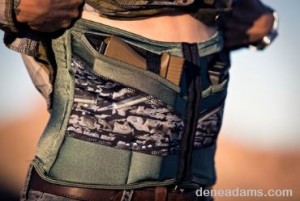
The heavier the pistol the quicker the average person begins to feel the weight of the pistol and begins to get uncomfortable.
Remember the trade-off here; the lighter the pistol the more felt recoil. Heavier pistols will have less recoil.
Here you must decide between comfort of carrying and how the pistol will actually feel when you need to shoot it.
4. The Grip of the Handgun
When you grip the pistol, it should be done with a snug pressure. Do not try to crush the grip of the pistol. It should be just tight enough to control the recoil.
All fingers below the trigger finger should be gripping the pistol grip. Your trigger finger should rest comfortably outside of the trigger guard when not in the act of actually shooting the pistol. Your thumb should easily reach the slide release and the manual safety if so equipped.
If you have any fingers hanging below the pistol grip there are after market finger rests that give the shooter a place to rest their finger or fingers on.
5. The Maximum Number of Rounds the Magazine Holds
There are two basic magazine designs. The first is the single stack which holds on the average between 6 to eight rounds depending on the caliber and the length of the magazine. The other type of magazine is the double stack magazine which holds on the average 10 to 17 rounds depending on the caliber and the length of the magazine.
There are aftermarket high capacity magazines in both single stack and double stack that can double the pistols available ammunition to the shooter; but buyer beware. Some of these magazines function well and then there are some that do not.
It is still better and safer to use the magazines that came with the pistol.
6. The Reliability and Accuracy of the Pistol
The pistol you select must be reliable. It must function every time you pull the trigger. This means that the pistol must load smoothly without any hang-ups.
Fire with a good smooth pull of the trigger. Lastly reliably eject the spent shell casing. The accuracy of this pistol should be good and in theory when sighted correctly each time the bullet should impact in the same place.
7. Some Common Views on Pistol Choice
{adinserter aliveafteramerika}The pistol that you choose must be easy to conceal on you.
Some believe that the pistol should also be a compact pistol that is light in weight, but heavy enough to avoid the worst recoil, and be thin.
Also it should have at least 6 to 8 rounds of ammunition that can stop a person (others will say the pistol should accommodate a double stacked magazine with 10 – 15 rounds of ammunition that can stop a person).
Either way, the shooter must be able to draw and fire quickly and accurately.
8. The Price of the Pistol
When buying the pistol spend the most money that you can really afford to spend. Do not go over board and spend so much money that you will break the bank or cause you to cut back on other essentials that are needed.
If you want a better grade of pistol than you can afford:
- look into a factory refurbished pistol with a warranty,
- buy a good slightly used second hand pistol that you have test fired,
- or buy a pistol that you have personally fired from a trusted friend.
9. The Warranty on the Pistol
Choose a pistol that has a well trusted warranty. A good warranty should cover the pistol for 3 to 5 years against poor materials, bad design, and poor workmanship, then followed by a limited warranty that covers the pistol for another 5 or so years.
There should not be any hidden fees dealing with any warranty service. A good warranty service center should pay shipping to and from the service center and have a quick turnaround time
10. The Ease of Obtaining Spare Parts and Accessories
After buying the pistol of your choosing there should be a good supply of spare parts and accessories. This allows you to buy spare magazines, upgrade parts, and anything else to accessorize your pistol to the performance that you require.
11. The Ease of Obtaining Ammunition
The pistol that you choose should use standard easy to obtain ammunition. The best ammunition to use is one that is used by the US Military or police forces throughout the United States. The best calibers to consider and use are the 9mm, 40 caliber, and the 45ACP.
Stay away from custom expensive ammunition that can dry up at a moment’s notice.
12. The Popularity of the Pistol
Always try to choose a pistol from a popular, well known manufacturer. The better you know the maker of the pistol you are choosing, the easier it will be to understand the inner workings and know what to respect when shooting it or carrying it.
In a time of civil unrest it is very important that you own and know how to use a small, reliable, and easy to conceal pistol for self-defense. Before you waste your time and money on a pistol that does not meet your needs, take the time to research which pistol is right for you. Talk to others and shoot different guns, then you’ll finally discover which one of those pistols suits you.
Stay close to find out what would we choose for a concealed pistol. Until then, use the comment section below to share your experience about finding the perfect handgun for self-defense.
This article has been written by Fred Tyrell for Survivopedia.
[yasr_visitor_votes]


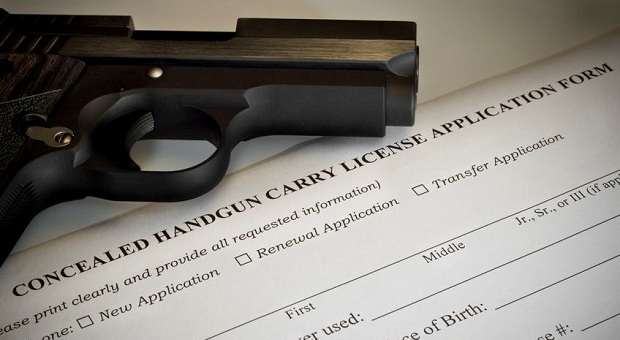

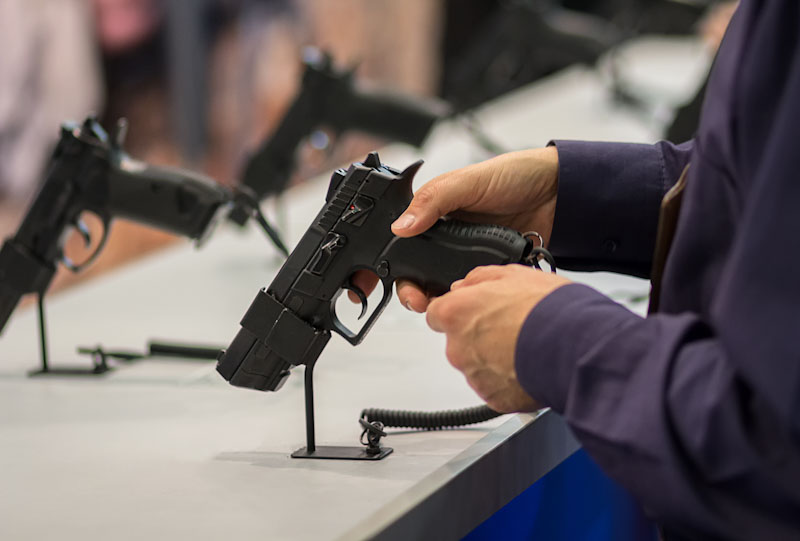
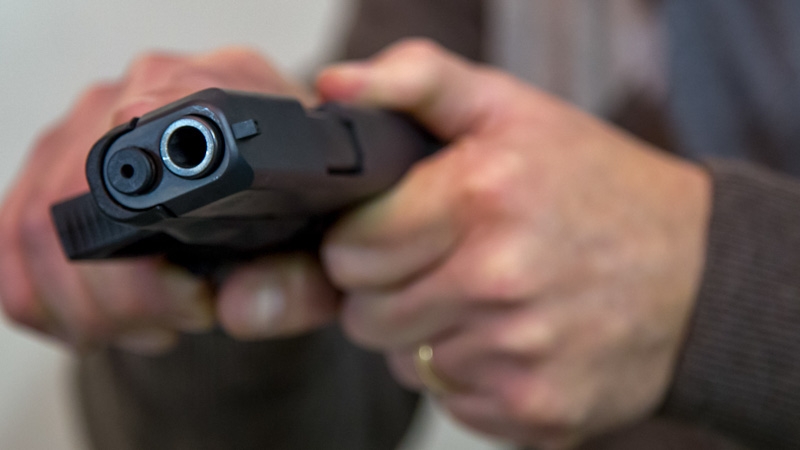
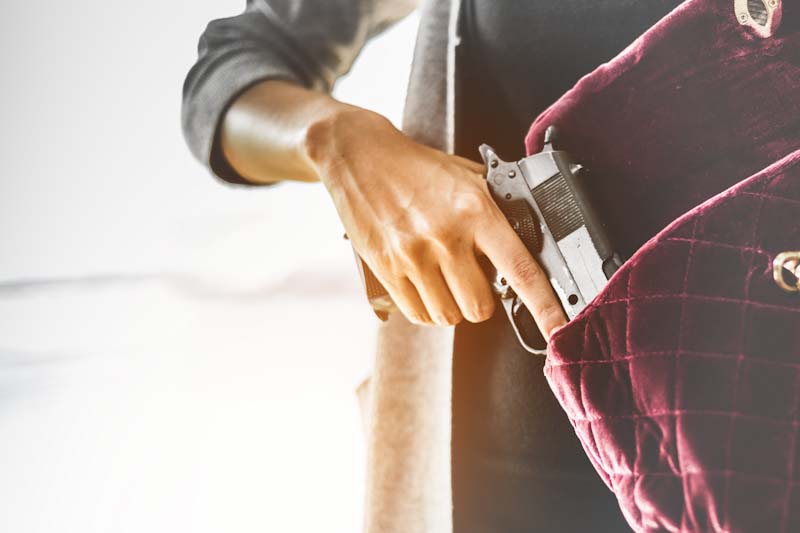
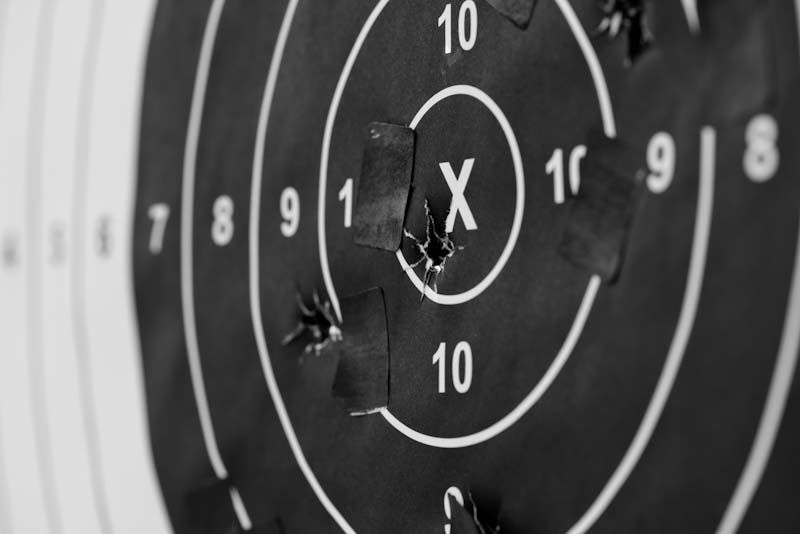

gary griffith | March 13, 2015
|
I think you wrote a good article, and have given some good advice.
If I could add a couple of comments.
The first is I wouldn’t advise any type of custom, or modified pistol for carrying. Lawyers will have a field day with the custom pistol. Your perfectly harmless choice becomes “more lethal” the minute you use it for self defense. You are also going to lose whatever pistol you used in that incedent. There goes your expensive custom. You probably won’t ever get it back.
Get a pistol that goes bang every time, and can be replaced tomorrow with one EXACTLY like it. In other words, get a gun that you can do without.
Mith Radates | March 13, 2015
|
The primary reason for avoiding any modifications (trigger pull,aftermarket springs, upgraded sights, etc.) is that a prosecutor will paint you as wanting to shoot somebody. Why else would you have modified your pistol to make it easier to do so?
PJ | March 14, 2015
|
WTH? Exercise your right to carry and protect yourself (and family), if you utilize your pistol for self defense in the manner you were taught (justifiable reason) there won’t be a prosecutor involved. If there IS a prosecutor involved, what evidence is more damning…custom gun work or the fact that you shot 3000 rounds per year, frequented gun forums and gun shows, posted comments about using your gun in self defense situations.
Man up and stop worrying about some ambiguous prosecutor which you assume will have a field day with any number of variables in a yet to happen (and highly unlikely) situation.
As to the other comment, if I lose a $2,000 pistol in a self defense situation so be it. I’d rather lose a $10,000 firearm that I trained with which SAVED MY LIFE than get stabbed to death. You guys worry about the wrong things.
Nick the Enforcer | March 14, 2015
|
Good article and comments! I like a lot of stuff S&W’s custom shop is doing just for that reason, in the case you have to use it and some far-reaching ADA is trying to make the ‘more lethal’ claim all you have to say it is a ‘factory’ option which can easily be proved with the serial #. Also although their smithing is not the holy grail by any means it gives you a good gun, legal protection and is quite a bit cheaper than taking to an aftermarket smith.
eastofaustin | March 13, 2015
|
What is left out of the criteria is the person. Different people choose different pistols for different reasons. Body type, typical dress, place of residence, and firearm experience are criteria that come to mind. Body type may dictate means of carry. Women often have trouble with typical belt holsters because of their built (hips being larger than waist in the typical hour glass figure). That tilts the gun into the body. If the waist is high and the gun is worn at the waist, that leaves little room between the waist and armpit to complete the draw. Often times, there are better choices. If a gun is worn cross draw (shoulder or waist) or in the appendix position, I would look for different features on the gun. In the appendix position, I want a shorter barrel so I don’t get jabbed when I sit down (or the gun and/or holster doesn’t get pushed up.) Any gun I wear in a cross draw position will have a manual safety because it is presented to anyone facing me in a “take me” position. They may have better access to the gun than I do. I generally agree that simpler is better but there are exceptions. Build dictates carry positions which factor into the choice of gun.
Typical dress is a big factor. If you generally where a suit or sportcoat or other covering garment, you have great advantage. If you can go around in tropical patterned shirts with the tails hanging out, that can be an advantage. If you live with casual business dress– sport shirt and slacks, you are limited in your choices (pocket, ankle, tucked in IWB or off body). Any of those become factors in the choice of weapon.
Place of residence can mean a lot. If it is illegal to open carry, then the gun has to be concealed by law. If open carry is allowed, concealed is preferable for tactical reasons, however, there is no huge liability for exposing the gun. Secondly, is the area in which you live “gun friendly?” Are people going to start screaming if they are aware you are carrying? Thirdly, the place of residence may dictate dress even if social position doesn’t. If it’s a 105 degrees in the shade, you probably won’t be wearing a trench coat. That dictates size of gun.
Lastly is experience. The article says, “don’t choose a gun where your fingers don’t all fit on the grip.” Good advice, generally. However, I have carried a gun for the last 15 years that leaves a pinkie hanging free. It’s a choice that I have made given all the criteria that touch me. I shoot the gun well. It’s a 9mm. I also shoot .45 ACPs, .44 Mags, .357 Sigs and Mags, and a lot of others. I have literally hundreds of thousands of rounds of trigger time. I know my gun and I know how to shoot it. It is not my first choice if the SHTF, but it is the gun that will be with me, and that beats any gun sitting in my safe. Let me say, DON’T CHOOSE A GUN YOU CAN’T SHOOT but the advice in the article is general in nature. If you are truly experienced, you probably don’t need advice as to the kind of gun to carry.
Whatever you choose, make sure it works for you and practice as often as you can. Paying a professional/certified instructor is well worth some time if you are less experienced. In all likelihood, a seasoned instructor not only can offer advice but she or he probably has a variety of handguns that they can let you shoot to help you find what’s best for you.
Mark | March 13, 2015
|
My caliber of choice is .45 because it’s fat and slow (like me), and because it’s hard NOT to bleed through a 1/2 diameter hole. However, if one is not comfortable with a .45, one MUST carry what one is WILLING to carry every day. Remember, the first rule in a gun fight is have a gun! Therefore, if one is only able/willing to carry a .22 (for whatever reason), by all means CARRY IT, and become proficient with it. The bad guys do not like to get shot with anything, whatever the caliber. Stay safe, and God Bless!
anona | March 14, 2015
|
If the published stats are correct more home invaders are killed with .22s than any other weapon. Personally I carry the Judge always loaded with the .410 self defense round. But if a .22 is what I had then I would dang well be carrying it. Like you said the bad guys don’t want to get shot with anything.
Ed | March 13, 2015
|
You did not include revolvers which are much simpler and more reliable in 357 and 38 special extremley deadly. Also one of the best for self protection the 45/410 derringer. that can do more damage to an intruder without having to be really accurate than all the guns you mentioned. Remember the first shot counts after that you are just using up ammunition
TPSnodgrass | March 14, 2015
|
Ed, not everyone will stop their violent attack after the “first shot”. In fact, most will not. I’m no expert, but as a retired law enforcement officer from an extremely populous state on the West Coast, yeah, that one. I’ve personally witnessed many suspects who were shot multiple times with a .45 ACP and only three with a .410(shotgun NOT a derringer) flee. All were found a short distance to blocks later. Some were deceased, most were not.
There are NO “magic bullets” in life or anyplace else. If you choose to only count on two rounds, good for you. You far bigger cojones than I do.
In your strong support for revolvers, you a absolutely correct. A good reliable four or three inch .38 Special IS an effective stopper of predation with modern hollow-point ammunition. Far too many discount a revolver in “only a .38” as somehow not being effective. That is just mythology. Good point to bring out.
anona | March 14, 2015
|
With the Judge self defense round, you got three mini slugs and 12 BBs going down range every time you pull the trigger. Heck, if that won’t stop him/her then there are four more where that one came from. thanks
PJ | March 15, 2015
|
Ever see what drugs does to a person? Ever seen someone close the distance of 10 feet in about 1 second? Keep thinking you’ll have time to fire more than 1 or 2 shots…if that. Real life isn’t a static flat range.
greg | March 13, 2015
|
Nice article if you assume everyone wants and carries a semi.
PJ | March 15, 2015
|
At least everyone under the age of 40 (I’m 38). 😉
eddie | March 14, 2015
|
One other important thing to keep in mind should a bad case of civil unrest break out.
Remember as you train with your weapon, it won’t be paper targets coming up your front lawn.
anona | March 14, 2015
|
You are so right, and most won’t be coming up the front drive either. They’ll be coming from all directions. Scary, isn’t it?
RT | March 14, 2015
|
No revolvers? I’m an old guy – 65 – and I carry a DAO S&W 242 everyday. Seven shots of .38+P+. is enough for my everyday situation. Yes, I MIGHT upgun to my Glock 34 if I’m heading into trouble… but then I won’t go. And certainly NOT without a long arm. Revolvers work and I can make headshots at 15 meters and do fast reloads with speedloaders. I own many handguns and this one, albeit somewhat rare, is what I choose to carry. No safeties, no ejection issues, no ammo reliability issues… point and shoot. And hit. Those are my priorities and my 242 fits the profile. Practice, practice and train, train with what you actually CARRY. At a Front Sight course last year, I was the only revolver guy (and the only one with a 2.5″ barrel) in 27 students. So what? I carry mine every day, am I supposed to go with one of my more exotic semis (I own more than a few) to keep the strangers happy? Nope. Train with what you carry people.
greg | March 14, 2015
|
I agree I carry my sp-101;2.2 barrel.gp-100,4 inch,for home.I enjoy semi.I have a coonan in my safe.
TPSnodgrass | March 14, 2015
|
Excellent points! Thank you.
Pingback:Nighttime Street Defense: Easy & Highly Effective Techniques | Survival skills, survival guns, survival guide | June 8, 2015
|